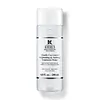What's inside
What's inside
 Key Ingredients
Key Ingredients

 Benefits
Benefits

 Concerns
Concerns

 Ingredients Side-by-side
Ingredients Side-by-side

Water
Skin ConditioningGlycerin
HumectantDipropylene Glycol
HumectantButylene Glycol
HumectantAlcohol Denat.
AntimicrobialMethyl Gluceth-20
Humectant3-O-Ethyl Ascorbic Acid
Skin ConditioningPhenoxyethanol
PreservativeSodium Citrate
BufferingDipotassium Glycyrrhizate
HumectantPPG-6-Decyltetradeceth-30
EmulsifyingCitric Acid
BufferingHydroxypropyl Tetrahydropyrantriol
Skin ConditioningPropylene Glycol
HumectantSalicylic Acid
MaskingXanthan Gum
EmulsifyingLavandula Angustifolia Oil
MaskingDisodium EDTA
Linalool
PerfumingSynthetic Fluorphlogopite
CI 77891
Cosmetic ColorantCitrus Aurantium Tachibana Peel Extract
HumectantPaeonia Suffruticosa Root Extract
Skin ProtectingTocopherol
AntioxidantWater, Glycerin, Dipropylene Glycol, Butylene Glycol, Alcohol Denat., Methyl Gluceth-20, 3-O-Ethyl Ascorbic Acid, Phenoxyethanol, Sodium Citrate, Dipotassium Glycyrrhizate, PPG-6-Decyltetradeceth-30, Citric Acid, Hydroxypropyl Tetrahydropyrantriol, Propylene Glycol, Salicylic Acid, Xanthan Gum, Lavandula Angustifolia Oil, Disodium EDTA, Linalool, Synthetic Fluorphlogopite, CI 77891, Citrus Aurantium Tachibana Peel Extract, Paeonia Suffruticosa Root Extract, Tocopherol
Water
Skin ConditioningAscorbic Acid 23%
AntioxidantPropanediol
SolventDimethicone
EmollientTromethamine
BufferingPanthenol
Skin Conditioning3-O-Ethyl Ascorbic Acid
Skin ConditioningSqualane
EmollientCaffeine
Skin ConditioningSodium Chloride
MaskingSodium Hyaluronate
HumectantSodium Sulfite
PreservativeDisodium EDTA
Glutathione
Adenosine
Skin ConditioningAcetyl Glucosamine
Skin ConditioningGardenia Florida Fruit Extract
Skin ConditioningAllantoin
Skin ConditioningDextrin
AbsorbentTocotrienols
Skin ConditioningTocopherol
AntioxidantElaeis Guineensis Oil
EmollientButylene Glycol
HumectantArginine
MaskingNiacinamide
SmoothingPentylene Glycol
Skin ConditioningAlcohol Denat.
AntimicrobialHelianthus Annuus Seed Oil
EmollientGlycyrrhiza Glabra Root Extract
BleachingMethyl Trimethicone
Skin ConditioningCarthamus Tinctorius Seed Oil
MaskingCamellia Japonica Seed Oil
EmollientDaucus Carota Sativa Root Extract
Skin ConditioningBeta-Carotene
Skin ConditioningWater, Ascorbic Acid 23%, Propanediol, Dimethicone, Tromethamine, Panthenol, 3-O-Ethyl Ascorbic Acid, Squalane, Caffeine, Sodium Chloride, Sodium Hyaluronate, Sodium Sulfite, Disodium EDTA, Glutathione, Adenosine, Acetyl Glucosamine, Gardenia Florida Fruit Extract, Allantoin, Dextrin, Tocotrienols, Tocopherol, Elaeis Guineensis Oil, Butylene Glycol, Arginine, Niacinamide, Pentylene Glycol, Alcohol Denat., Helianthus Annuus Seed Oil, Glycyrrhiza Glabra Root Extract, Methyl Trimethicone, Carthamus Tinctorius Seed Oil, Camellia Japonica Seed Oil, Daucus Carota Sativa Root Extract, Beta-Carotene
 Reviews
Reviews

Ingredients Explained
These ingredients are found in both products.
Ingredients higher up in an ingredient list are typically present in a larger amount.
You might know this ingredient as Ethyl Ascorbic Acid, a more stable version of ascorbic acid.
Like other types of vitamin C, this ingredient has many benefits including reducing wrinkles, skin soothing, dark spot fading, and fighting against free radicals.
3-O-Ethyl Ascorbic Acid interferes with the process of skin darkening, helping to reduce hyperpigmentation. It also encourages the skin to produce more collagen.
Once applied, 3-O-Ethyl Ascorbic Acid is converted to Vitamin C deeper in the skin's layers. This process is slow but makes this ingredient more tolerable for skin.
The optimum pH range for this ingredient is 4 - 5.5
Learn more about 3-O-Ethyl Ascorbic AcidAlcohol Denat. is an alcohol with a denaturant property. It is created by mixing ethanol with other additives.
This ingredient gets a bad rep because it is irritating and drying - mostly due to its astringent property. Astringents draw out natural oils in tissue, constricting pores and leaving your skin dried out.
However, alcohol denat. is not all that bad.
Due to its low molecular weight, alcohol denat. tends to evaporate quickly. One study on pig skin found half of applied alcohol evaporated in 10 seconds and less than 3% stayed on skin.
This also helps other ingredients become better absorbed upon application.
Studies are conflicted about whether this ingredient causes skin dehydration. One study from 2005 found adding emollients to propanol-based sanitizer decreased skin dryness and irritation. Another study found irritation only occurs if your skin is already damaged.
Small amounts of alcohol are generally tolerated by oily skin or people who live in humid environments.
The rule of thumb is if this alcohol is near the end of an ingredients list, it will probably not affect your skin much.
Also...
This ingredient has antimicrobial and solvent properties.
The antimicrobial property helps preserve products and increase their shelf life. As a solvent, it helps dissolve other ingredients.
Other types of astringent alcohols include:
Learn more about Alcohol Denat.Butylene Glycol (or BG) is used within cosmetic products for a few different reasons:
Overall, Butylene Glycol is a safe and well-rounded ingredient that works well with other ingredients.
Though this ingredient works well with most skin types, some people with sensitive skin may experience a reaction such as allergic rashes, closed comedones, or itchiness.
Learn more about Butylene GlycolDisodium EDTA plays a role in making products more stable by aiding other preservatives.
It is a chelating agent, meaning it neutralizes metal ions that may be found in a product.
Disodium EDTA is a salt of edetic acid and is found to be safe in cosmetic ingredients.
Learn more about Disodium EDTATocopherol (also known as Vitamin E) is a common antioxidant used to help protect the skin from free-radicals and strengthen the skin barrier. It's also fat soluble - this means our skin is great at absorbing it.
Vitamin E also helps keep your natural skin lipids healthy. Your lipid skin barrier naturally consists of lipids, ceramides, and fatty acids. Vitamin E offers extra protection for your skin’s lipid barrier, keeping your skin healthy and nourished.
Another benefit is a bit of UV protection. Vitamin E helps reduce the damage caused by UVB rays. (It should not replace your sunscreen). Combining it with Vitamin C can decrease sunburned cells and hyperpigmentation after UV exposure.
You might have noticed Vitamin E + C often paired together. This is because it is great at stabilizing Vitamin C. Using the two together helps increase the effectiveness of both ingredients.
There are often claims that Vitamin E can reduce/prevent scarring, but these claims haven't been confirmed by scientific research.
Learn more about TocopherolWater. It's the most common cosmetic ingredient of all. You'll usually see it at the top of ingredient lists, meaning that it makes up the largest part of the product.
So why is it so popular? Water most often acts as a solvent - this means that it helps dissolve other ingredients into the formulation.
You'll also recognize water as that liquid we all need to stay alive. If you see this, drink a glass of water. Stay hydrated!
Learn more about Water